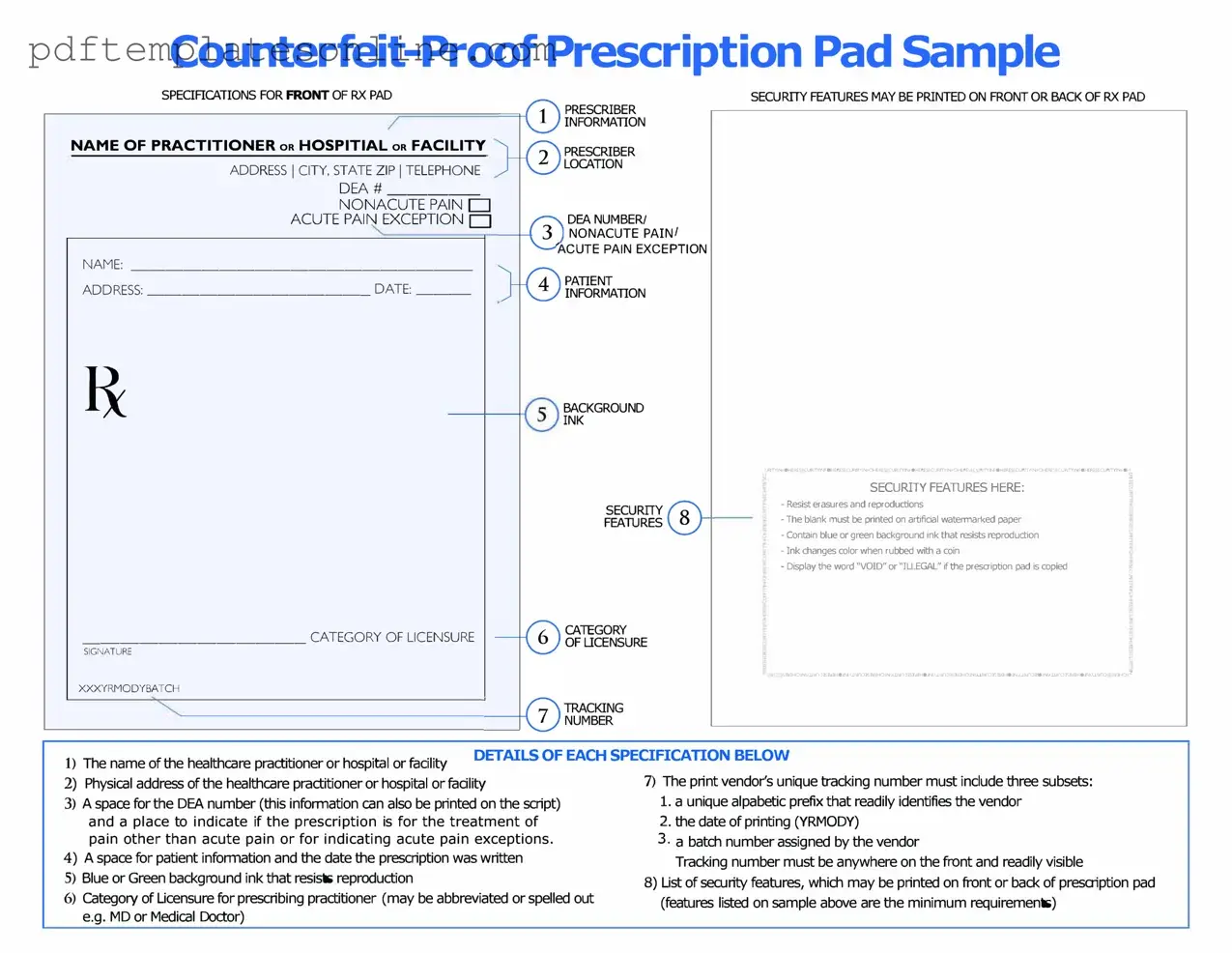Filling out a Prescription Pad form can seem straightforward, but many people make common mistakes that can lead to delays or complications in receiving their medications. One frequent error is not providing complete patient information. Missing details like the patient's full name, date of birth, or address can cause confusion and may result in the pharmacy being unable to process the prescription.
Another common mistake is failing to specify the medication dosage clearly. If the dosage is unclear or ambiguous, the pharmacist may interpret it incorrectly, which could lead to serious health risks. It's essential to write the dosage in a clear and legible manner, ensuring that it is easily understood.
People often overlook the importance of including the quantity of medication prescribed. Omitting this information can lead to the patient receiving either too little or too much of their medication, which can affect their treatment plan. Always double-check that the quantity is clearly stated.
Additionally, many individuals forget to include the prescribing physician's signature. Without this crucial step, the prescription is not valid. It is vital to ensure that the signature is present and that it matches the name printed on the form.
Another mistake is not providing clear instructions for the pharmacy. For instance, if there are specific directions for how the medication should be dispensed or if there are any special considerations, these should be noted clearly. Lack of instructions can lead to confusion and delays in medication availability.
Some people also make the mistake of using abbreviations or shorthand that may not be universally understood. While it might seem convenient, using clear and complete language helps avoid misunderstandings that could jeopardize patient safety.
It’s also important to check for any allergies or interactions with other medications. Neglecting to include this information can put the patient at risk. Always ensure that any known allergies are clearly noted on the form.
Another common oversight is failing to update the Prescription Pad form for refills. If a patient requires refills but this is not indicated on the form, they may find themselves without necessary medication when they need it most. Clearly marking the number of refills can save time and hassle later on.
Lastly, some individuals may not check the expiration date of the Prescription Pad form itself. Using an expired form can result in the pharmacy refusing to fill the prescription. Always verify that the form is current before submission.
By avoiding these common mistakes, individuals can ensure a smoother experience when filling out the Prescription Pad form. Taking the time to double-check each section can lead to better health outcomes and a more efficient process for obtaining medications.
